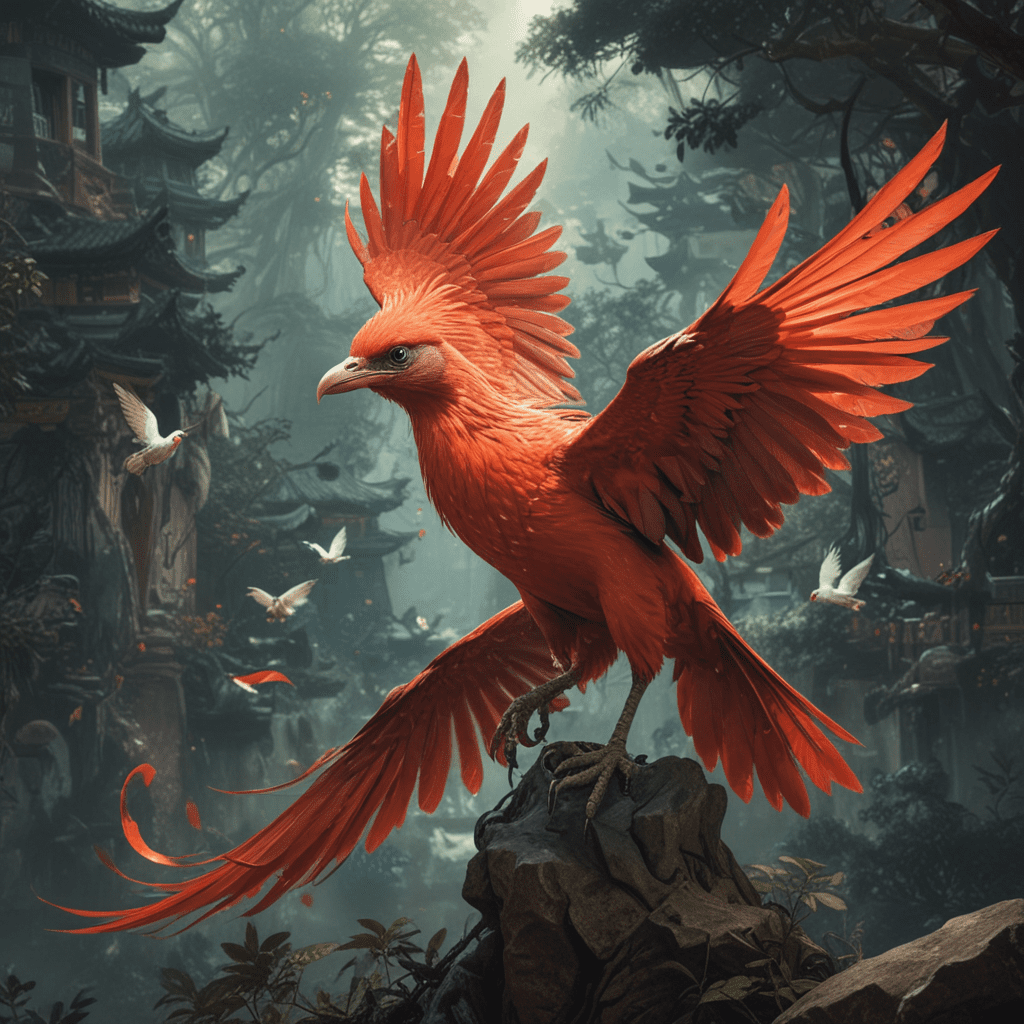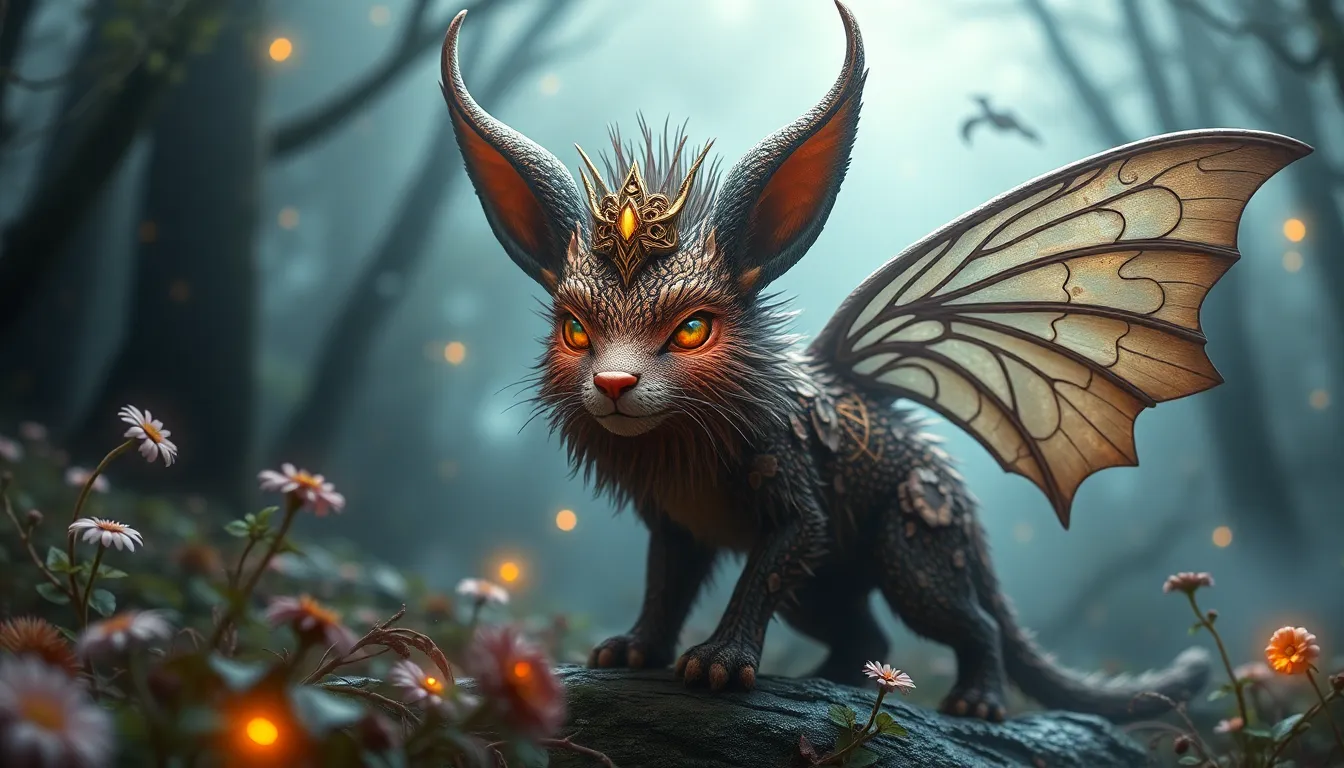The Myth of the Vermilion Bird in Chinese Mythology
I. Introduction
The Vermilion Bird, also known as the Southern Bird, is a mythical creature deeply rooted in Chinese mythology and culture. It holds a prominent place among the Four Symbols, a group of celestial guardians associated with the compass directions and seasons, representing the south and summer. As a symbol of prosperity, good fortune, and longevity, it plays a significant role in ancient Chinese beliefs and traditions.
II. Origin and Appearance
The Vermilion Bird is believed to have originated from ancient Chinese astrology, where it was associated with the constellation of the Red Bird. According to legend, it resembles a majestic phoenix with beautiful, vibrant plumage. Its body is fiery red, and its tail feathers shimmer with iridescent colors. The Vermilion Bird is often depicted with a human face and the body of a bird, symbolizing the harmonious fusion of the divine and the earthly realms.
III. Symbolism and Attributes
The Vermilion Bird embodies a wealth of auspicious attributes. It represents prosperity, good fortune, and longevity. Its red color is associated with fire and energy, making it a symbol of enthusiasm, vitality, and passion. Additionally, the Vermilion Bird is considered a symbol of transformation and rebirth, as it is said to rise from the ashes of its own sacrifice.
IV. Legends and Folktales
Numerous legends and folktales surround the Vermilion Bird. One tale recounts how the Vermilion Bird appeared during the reign of Emperor Yao, bringing with it an era of peace and prosperity. Another story tells of a young maiden who was transformed into the Vermilion Bird after sacrificing herself to save her village from a devastating fire. These tales have perpetuated the Vermilion Bird's status as a symbol of heroism, sacrifice, and hope.
VI. Connections to the Five Elements
The Vermilion Bird is closely associated with the Five Elements theory in Chinese philosophy. It represents the element of fire, which is associated with summer, heat, and passion. This connection underscores the Vermilion Bird's energetic and transformative qualities.
VII. Role in Taoism and Feng Shui
In Taoism, the Vermilion Bird is revered as a sacred creature symbolizing immortality and spiritual transformation. It is often depicted in Taoist temples and altars as a guardian deity. In Feng Shui, the Vermilion Bird is placed in the south sector of a home or building to enhance prosperity, fame, and good relationships.
VIII. Artistic Representations
The Vermilion Bird has been a popular subject in Chinese art for centuries, appearing in paintings, sculptures, and embroidery. It is commonly depicted as a majestic Phoenix with intricate patterns and vibrant colors. These artistic representations showcase the Vermilion Bird's beauty and auspicious qualities.
IX. Literary Influences
The Vermilion Bird has significantly influenced Chinese literature. It is mentioned in ancient poems, novels, and folklore, where it plays a vital role in shaping narratives and conveying symbolic meanings. Its presence in literature adds depth and richness to Chinese mythology.
X. Conclusion
The Myth of the Vermilion Bird in Chinese Mythology is a testament to the rich cultural heritage of China. This celestial creature embodies prosperity, good fortune, and transformation, serving as a potent symbol in Chinese beliefs and practices. Its connections to the Five Elements, Taoism, Feng Shui, and literature underscore its enduring significance as a sacred and revered figure in Chinese mythology.
Frequently Asked Questions
What color is the Vermilion Bird?
The Vermilion Bird is depicted with vibrant red plumage, symbolizing fire, energy, and passion.What does the Vermilion Bird represent?
It represents prosperity, good fortune, longevity, transformation, and rebirth.Where is the Vermilion Bird placed in Feng Shui?
The south sector of a home or building to enhance prosperity, fame, and good relationships.
- Is the Vermilion Bird related to phoenixes?
Yes, it is often depicted as a majestic Phoenix with intricate patterns and vibrant colors.


